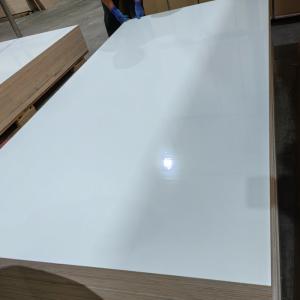Determine if moisture resistance mdf is real or not
1. View product identification and certificationBrand and Model: Regular manufacturers (such as Millennium Boat, Moganshan, Daya, Lushuihe, Greenply, etc.) will clearly label "Moisture proof MDF" or "MR-MDF" on the board or label.
Environmental certification: Check if there are CARB P2, FSC, E0/E1 level certifications to ensure that formaldehyde emissions meet standards.
Moisture proof label: Some brands will use green or blue markings on the moisture proof MDF (such as the moisture proof board of Millennium Boat being green).

2. Observe the color and structure of the board
Color: Moisture resistant MDF usually appears light green, light blue, or special colored cores due to the addition of moisture resistant agents such as wax or resin, while ordinary MDF appears light yellow or brown.
Sectional texture:
True moisture resistant MDF: The fibers are delicate and uniform, without obvious looseness or layering.
Poor quality counterfeit products: may have rough fibers or loose bonding.
3. Simple waterproof test
Drip test: Drop a few drops of water on the surface of the board and let it stand for 10-15 minutes:
True moisture resistant MDF: Water droplets will remain impermeable for a long time or only slightly moist.
Ordinary MDF: Water will quickly seep in, leaving obvious water stains and even swelling.
Attention: Moisture resistant MDF is not completely waterproof and can still deform after prolonged immersion in water, but it has stronger moisture resistance than ordinary MDF.
4. Check the inspection report and quality assurance
Require suppliers to provide third-party testing reports (such as water absorption thickness expansion rate, static bending strength, etc.), with a focus on:
Water absorption expansion rate (moisture-proof MDF is usually ≤ 8%, ordinary MDF may be>15%).
Instructions for adding moisture-proof agents (such as "wax treatment" or "resin modification").
Legitimate brands will provide a warranty commitment (such as a "10-year moisture-proof warranty").
5. Professional testing (if necessary)
If strict verification is required, it can be sent to a quality inspection agency for artificial boards, and the testing items include:
24-hour water absorption thickness expansion rate (GB/T 11718-2020 standard).
Humidity cycling test (simulating stability in humid environments).
